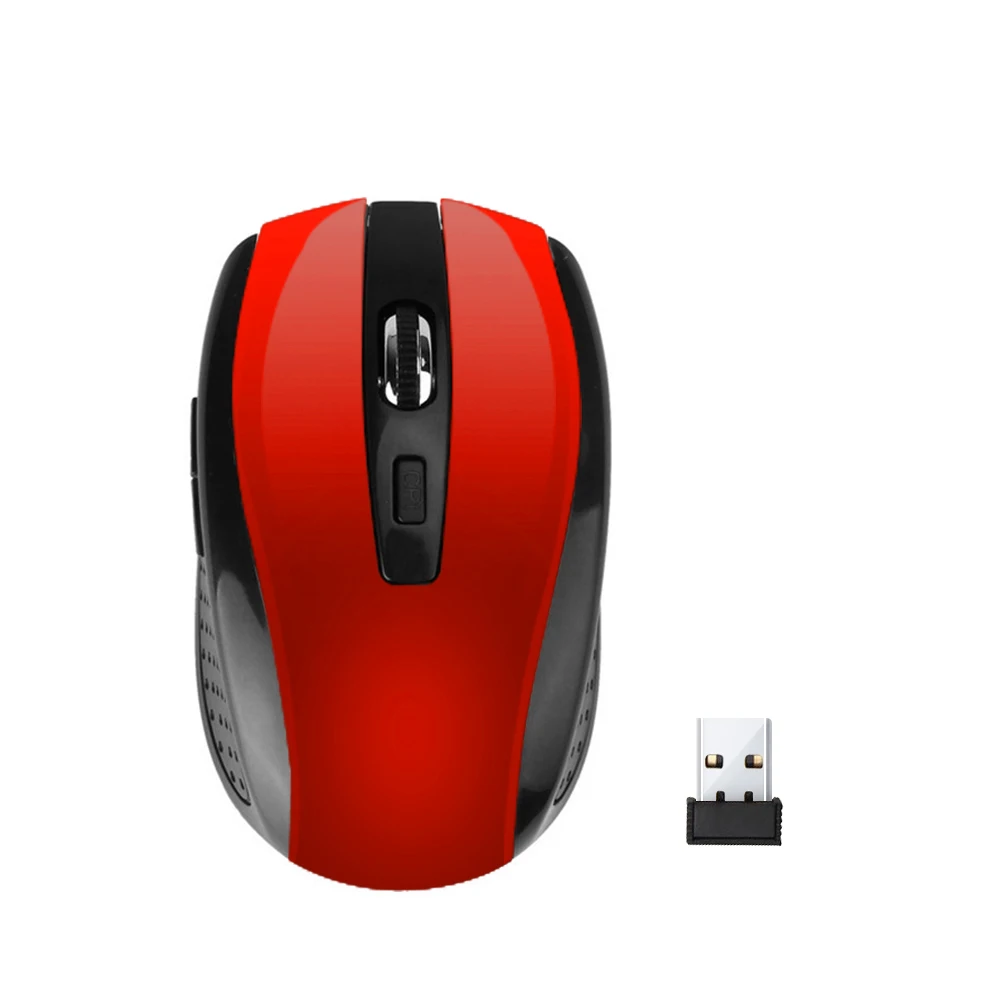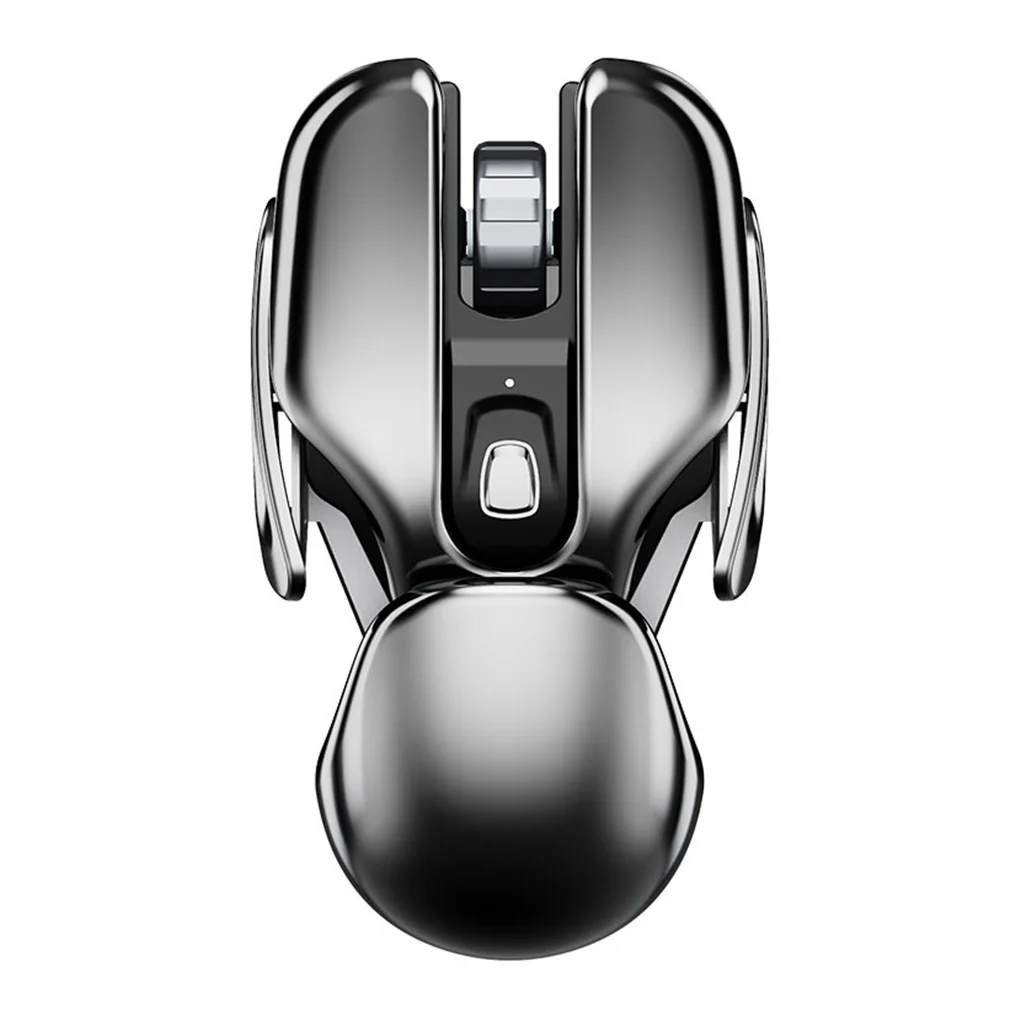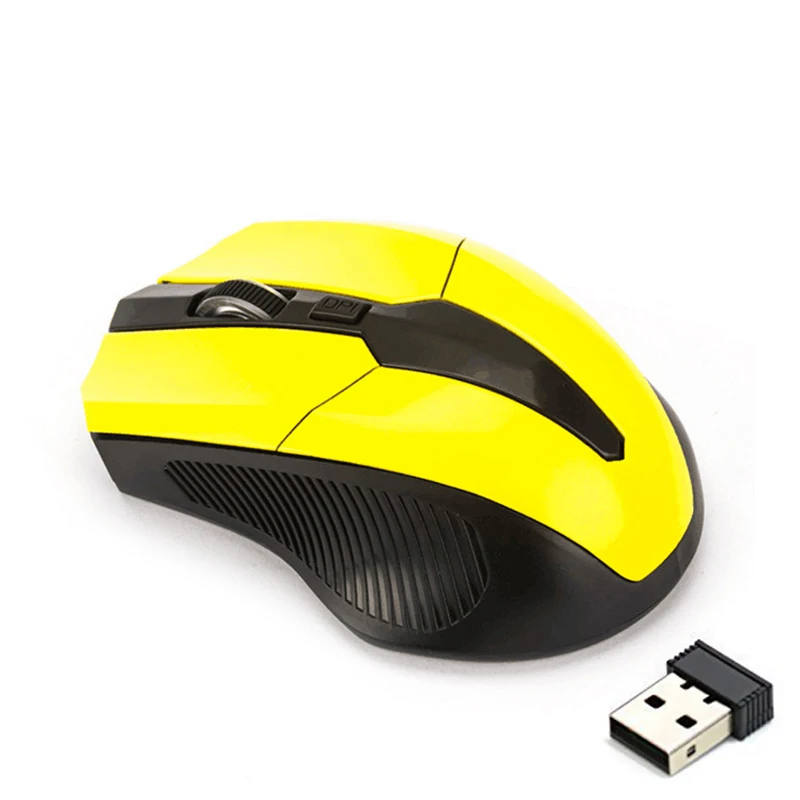In the modern digital age, peripheral devices like wireless mice have become indispensable tools for enhancing productivity and ensuring a seamless computing experience. Understanding how to connect a wireless mouse can significantly improve your workflow, whether you’re a professional, a student, or a casual user. This guide will walk you through the various methods and considerations for connecting a wireless mouse to different devices, ensuring you maximize the functionality and convenience that wireless technology offers.
 Understanding the Basics of Wireless Mice
Understanding the Basics of Wireless Mice
Before diving into the connection process, it’s essential to grasp the fundamental aspects of wireless mice. Unlike their wired counterparts, wireless mice communicate with your computer or device without the need for physical cables. This wireless communication typically occurs via Bluetooth or a proprietary 2.4 GHz wireless connection using a USB receiver.
Types of Wireless Connections
There are two primary types of wireless connections for mice:
- Bluetooth Connection: This method uses your device’s built-in Bluetooth capability to connect directly to the mouse without the need for additional hardware.
- 2.4 GHz USB Receiver: This approach involves using a small USB dongle that plugs into your computer, creating a dedicated radio frequency between the mouse and receiver for a stable connection.
Each connection type has its advantages, and the choice largely depends on your device compatibility and personal preferences.
Preparing to Connect Your Wireless Mouse
To ensure a smooth setup process, it’s crucial to prepare your devices appropriately. Follow these preliminary steps before attempting to connect your wireless mouse.
Check Battery Levels
Before anything else, verify that your wireless mouse has sufficient battery power. A low battery can cause connectivity issues or intermittent functionality. Replace or recharge the batteries if necessary to avoid disruptions during the setup process.
Charge Your Mouse
For rechargeable wireless mice, connect the mouse to a power source using the provided USB cable. Allow it to charge fully to ensure optimal performance and longevity. Typically, full charging takes a few hours, but refer to the manufacturer’s instructions for specific details.
Install Necessary Drivers
While most wireless mice are plug-and-play, some models may require specific drivers or software for full functionality. Visit the manufacturer’s website to download and install any necessary drivers or software updates. This step ensures that your mouse works correctly and supports all its features.
 Step-by-Step Guide: How to Connect a Wireless Mouse
Step-by-Step Guide: How to Connect a Wireless Mouse
Connecting a wireless mouse is generally straightforward, but the exact steps can vary depending on the connection type and the device you’re using. Below, we outline the procedures for both Bluetooth and 2.4 GHz USB receiver connections across different platforms.
Connecting via Bluetooth
Windows PCs
- Activate Bluetooth: Click on the Start menu, go to Settings > Devices > Bluetooth & other devices. Ensure that Bluetooth is turned on.
- Put Mouse in Pairing Mode: Most wireless mice have a button to initiate pairing. Press and hold this button until the LED indicator starts blinking, signaling that the mouse is in pairing mode.
- Add Bluetooth Device: In the Bluetooth settings, click on “Add Bluetooth or other device” and select “Bluetooth.”
- Select Your Mouse: From the list of available devices, choose your wireless mouse. Once connected, the mouse should function immediately.
MacOS
- Enable Bluetooth: Click on the Apple menu, go to System Preferences > Bluetooth, and ensure Bluetooth is turned on.
- Initiate Pairing Mode: Press the pairing button on your wireless mouse until the LED indicator flashes.
- Connect the Mouse: In the Bluetooth preferences, find your mouse in the list of devices and click “Connect.” The mouse should now be paired with your Mac.
Linux
- Open Bluetooth Settings: Access the Bluetooth settings from your system menu or settings panel.
- Enter Pairing Mode: Activate the pairing mode on your wireless mouse by pressing the designated button until the indicator blinks.
- Pair the Device: Select your mouse from the list of available Bluetooth devices and follow any on-screen prompts to complete the pairing process.
Connecting via 2.4 GHz USB Receiver
Windows PCs
- Insert the USB Receiver: Plug the wireless mouse’s USB receiver into an available USB port on your computer.
- Power On the Mouse: Turn on the mouse using the power switch, usually located on the underside.
- Automatic Detection: Windows should automatically detect the mouse and install any necessary drivers. Once done, the mouse is ready to use.
MacOS
- Plug in the Receiver: Insert the USB receiver into a USB port on your Mac.
- Turn on the Mouse: Switch on the wireless mouse using the power button.
- Automatic Setup: macOS will recognize the mouse, and it will be ready to use immediately without additional steps.
Linux
- Connect the Receiver: Insert the USB dongle into a USB port.
- Enable the Mouse: Ensure the mouse is powered on.
- System Recognition: Linux should automatically detect the mouse. If not, you may need to check your distribution’s documentation for additional steps.
 Troubleshooting Common Connection Issues
Troubleshooting Common Connection Issues
Despite the straightforward process, you might encounter challenges when connecting your wireless mouse. Here are some common issues and their solutions.
Mouse Not Detected
If your computer fails to detect the mouse, start by ensuring the mouse is turned on and the batteries are fresh. For Bluetooth connections, make sure Bluetooth is enabled on your device. Restarting your computer can also resolve temporary glitches.
Lag or Unresponsive Cursor
A laggy or unresponsive cursor often indicates low battery power or interference with the wireless signal. Replace the batteries and ensure there are no obstacles between the mouse and receiver. For Bluetooth mice, reducing the distance between the mouse and device can improve responsiveness.
Pairing Problems
If your mouse isn’t pairing correctly, try resetting the Bluetooth connection. On Windows, remove the device from the Bluetooth list and attempt to pair it again. For USB receiver connections, unplugging and reinserting the receiver can help re-establish the connection.
Driver Issues
Outdated or missing drivers can cause your mouse to malfunction. Visit the manufacturer’s website to download the latest drivers. Installing these updates can fix connectivity issues and enhance the overall performance of your mouse.
Enhancing Your Wireless Mouse Experience
Once your wireless mouse is connected, you can take several steps to enhance its functionality and ensure a smooth experience.
Customize Mouse Settings
Adjusting the mouse settings to suit your preferences can significantly improve your user experience. On Windows, navigate to Settings > Devices > Mouse to change pointer speed, adjust scrolling behavior, and customize button functions. On macOS, go to System Preferences > Mouse to modify tracking speed, scrolling direction, and other settings.
Update Firmware
Some wireless mice come with firmware updates that provide new features or improve performance. Check the manufacturer’s website or software for available updates and follow the instructions to install them. Keeping your mouse’s firmware up-to-date ensures optimal functionality and compatibility.
Invest in a Mouse Pad
Using a quality mouse pad can enhance the performance of your wireless mouse. A smooth, non-reflective pad provides better tracking and reduces wear on the mouse’s sensor. Additionally, a mouse pad can prevent your mouse from skidding, allowing for precise movements.
Maintain a Clean Mouse
Regularly cleaning your wireless mouse helps maintain its performance and longevity. Use a soft cloth to remove dust and debris from the surface and ensure the sensor remains unobstructed. Avoid using harsh chemicals that could damage the mouse’s components.
 Connecting a Wireless Mouse to Various Devices
Connecting a Wireless Mouse to Various Devices
Wireless mice are versatile and can be connected to a multitude of devices beyond traditional desktops and laptops. Here’s how to connect your wireless mouse to other platforms.
Tablets and Smartphones
Many tablets and smartphones now support Bluetooth connectivity for peripherals like mice.
For Android Devices
- Enable Bluetooth: Go to Settings > Connected devices > Connection preferences > Bluetooth and turn it on.
- Pair the Mouse: Activate pairing mode on your mouse and select it from the list of available devices on your Android device.
- Confirm Connection: Once paired, you can use the mouse to navigate your Android device.
For iOS Devices
- Open Bluetooth Settings: Navigate to Settings > Bluetooth and ensure Bluetooth is enabled.
- Activate Pairing Mode: Press the pairing button on your wireless mouse until the LED flashes.
- Connect the Mouse: Select your mouse from the list of available devices. After connecting, you can use the mouse to interact with your iPad or iPhone.
Smart TVs and Streaming Devices
Connecting a wireless mouse to smart TVs or streaming devices can enhance navigation and usability.
For Smart TVs
- Access Bluetooth Settings: Use your TV remote to navigate to the Bluetooth settings menu.
- Initiate Pairing Mode: Put your wireless mouse into pairing mode.
- Select and Connect: Choose your mouse from the list of Bluetooth devices on the TV.
For Streaming Devices
Devices like Apple TV, Amazon Fire TV, and others may support Bluetooth mice. Follow similar steps to pair your mouse via the device’s Bluetooth settings.
Gaming Consoles
While not as common, some gaming consoles support Bluetooth peripherals, including wireless mice. Check your console’s compatibility and follow the Bluetooth pairing instructions accordingly.
Advantages of Using a Wireless Mouse
Understanding the benefits of a wireless mouse can reinforce the importance of knowing how to connect a wireless mouse effectively.
Enhanced Mobility and Flexibility
A wireless mouse provides greater freedom of movement compared to a wired mouse. Without the constraints of a cable, you can position your mouse more comfortably and reduce clutter on your desk.
Improved Aesthetics
Wireless mice contribute to a cleaner and more organized workspace. The absence of cables not only looks sleek but also minimizes the risk of tangling and accidental disconnections.
Greater Compatibility
Wireless mice are typically compatible with a wide range of devices, from PCs and Macs to tablets and smart TVs. This versatility makes them a valuable addition to any tech setup.
Portability
Most wireless mice are lightweight and compact, making them easy to carry in a bag or backpack. This portability is especially beneficial for those who work on the go or travel frequently.
Optimizing Wireless Mouse Performance
To get the most out of your wireless mouse, consider these optimization tips:
Update Drivers and Firmware Regularly
Regular updates can introduce new features, fix bugs, and improve compatibility with your devices. Check the manufacturer’s website or use their software to stay updated.
Manage Battery Life
Monitor your mouse’s battery levels to prevent unexpected downtime. Some wireless mice come with power-saving features that extend battery life, such as automatic sleep modes when not in use.
Use Quality Accessories
Investing in high-quality accessories, like a durable mouse pad or a USB extension for better receiver placement, can enhance your wireless mouse’s performance and lifespan.
Reduce Interference
Minimize potential wireless interference by keeping your mouse and receiver away from other electronic devices that operate on similar frequencies, such as routers or cordless phones.
Exploring Advanced Features of Wireless Mice
Modern wireless mice often come packed with advanced features that enhance functionality and user experience.
Customizable Buttons
Many wireless mice offer programmable buttons that you can customize to perform specific tasks, such as launching applications, executing macros, or navigating web pages.
Adjustable DPI Settings
DPI (dots per inch) settings determine the sensitivity of your mouse. Adjustable DPI allows you to customize cursor speed and precision to suit different tasks, whether you’re gaming, designing, or browsing.
Ergonomic Designs
Ergonomically designed wireless mice provide better hand support and reduce strain during prolonged use. Features like contoured shapes, thumb rests, and adjustable grips contribute to a more comfortable experience.
Multi-Device Connectivity
Some wireless mice support multi-device connectivity, enabling you to switch between multiple devices seamlessly. This feature is particularly useful for users who work across different platforms, such as a laptop and a tablet.
Maintaining Security with Wireless Mice
While wireless mice offer convenience, it’s essential to maintain security to protect your devices and data.
Secure Pairing
Ensure that you pair your wireless mouse with trusted devices only. Avoid using public or unsecured Bluetooth connections to minimize the risk of unauthorized access.
Regularly Update Firmware
Firmware updates often include security patches that protect against vulnerabilities. Keeping your mouse’s firmware up-to-date enhances its security and performance.
Manage Device Connections
Periodically review the list of devices paired with your wireless mouse and remove any that are no longer in use. This practice helps prevent unauthorized connections and maintains optimal performance.
Exploring Alternatives and Upgrades
While wireless mice are highly versatile, exploring alternatives or considering upgrades can further enhance your computing experience.
Hybrid Mice
Hybrid mice offer both wired and wireless connectivity options, providing flexibility depending on your needs. This versatility ensures uninterrupted use, whether you’re working in a stationary setup or on the go.
Gaming Wireless Mice
For gamers, specialized wireless mice offer features like high DPI sensitivity, customizable weights, and advanced button configurations. These enhancements cater to the demands of competitive gaming, providing superior performance and precision.
Rechargeable Versus Battery-Powered
Choosing between rechargeable and battery-powered wireless mice depends on your usage patterns and preferences. Rechargeable mice offer eco-friendly benefits and long-term cost savings, while battery-powered mice provide convenience without the need for frequent recharging.
 Future Trends in Wireless Mouse Technology
Future Trends in Wireless Mouse Technology
Wireless mouse technology continues to evolve, introducing innovative features that enhance user experience and functionality.
Enhanced Connectivity Options
Future wireless mice may offer even more connectivity options, including improved Bluetooth standards and better integration with smart home devices.
Advanced Gesture Controls
Gesture controls and touch-sensitive surfaces are becoming more prevalent, allowing users to perform complex actions with simple hand movements, thus improving efficiency and ease of use.
Sustainable Materials
As sustainability becomes a priority, manufacturers are exploring eco-friendly materials and manufacturing processes for wireless mice, reducing their environmental impact.
AI Integration
Artificial intelligence integration could lead to smarter wireless mice that adapt to user behaviors, optimize performance based on usage patterns, and provide personalized settings automatically.
Final Thoughts
Mastering how to connect a wireless mouse empowers you to enhance your computing experience with greater flexibility and convenience. By understanding the different connection methods, preparing your devices appropriately, and following the step-by-step guides provided, you can seamlessly integrate a wireless mouse into your setup. Additionally, addressing common issues and optimizing your mouse’s performance ensures that you enjoy a smooth and efficient workflow. Embrace the benefits of wireless technology and elevate your productivity by effectively connecting and utilizing your wireless mouse today.